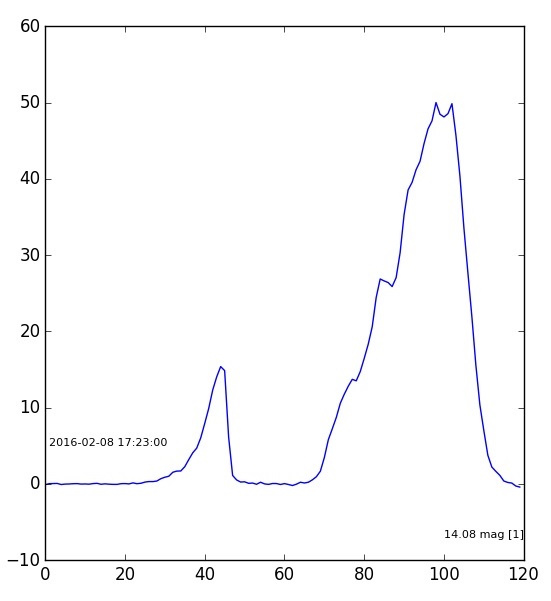The image shows a Gaia spectrum of SN 2016adj. SN 2016adj was first discovered by a group of Australian amateur astronomers, and lies in Centaurus A (Cen A), which at only 3.5 Mpc is extremely nearby. Spectroscopy shows that SN 2016adj is a hydrogen-rich Type II supernova, and likely comes from the collapse of a massive red supergiant star.
The spectrum of SN 2016adj as seen by Gaia is extremely red, with almost no flux seen in the blue spectrum on the left of the figure. The spectrum was measured with Gaia's own Blue and Red Prism Photometers (BP/RP). This spectrum is uncalibrated, with the Y-axis showing normalised counts, and the X-axis showing channel number (i.e. no attempt is made to measure wavelength). this is an uncalibrated spectrum, and the gap between channels 50-70 is the gap between the BP and RP photometers as imaged on the detectors.
Cen A is dominated by striking dust lanes, and unfortunately the supernova lies within one of these. The supernova is hence heavily obscured; while it has a faint blue magnitude of ~17, it is much brighter (i~13) in the redder bands. Despite the reddening, the proximity of SN 2016adj means that it is feasible to search the many archival Hubble Space Telescope images of the galaxy to try and identify the supernova progenitor. The astrometric precision of Gaia can be used to accurately locate the supernova on archival images.
See Gaia sees exploding stars next door for more information.
Page last updated: 17 March 2016

